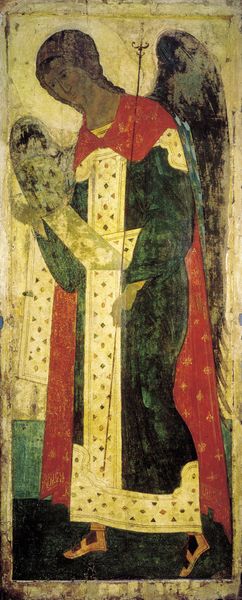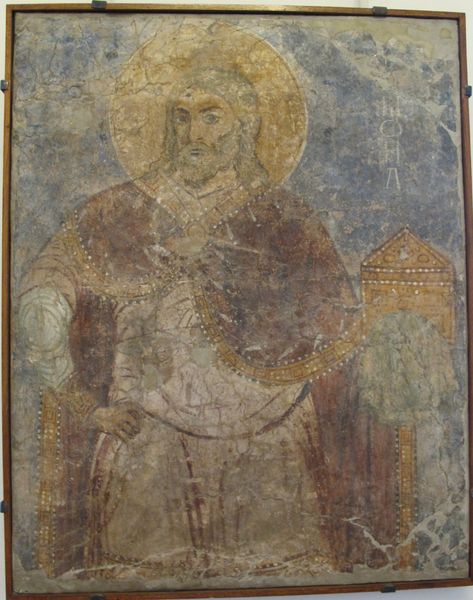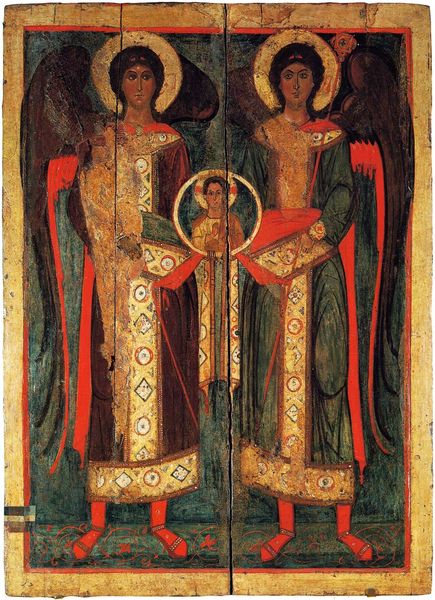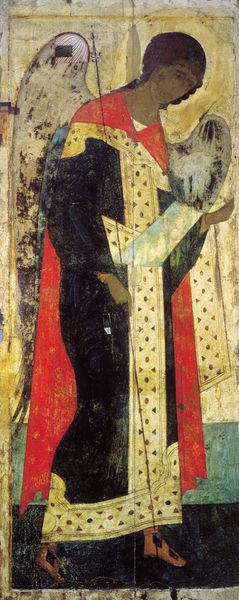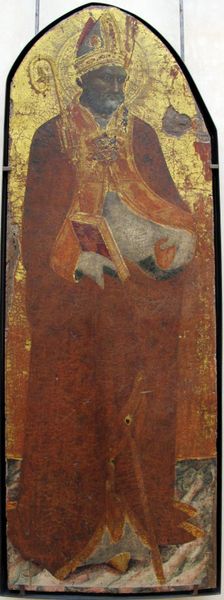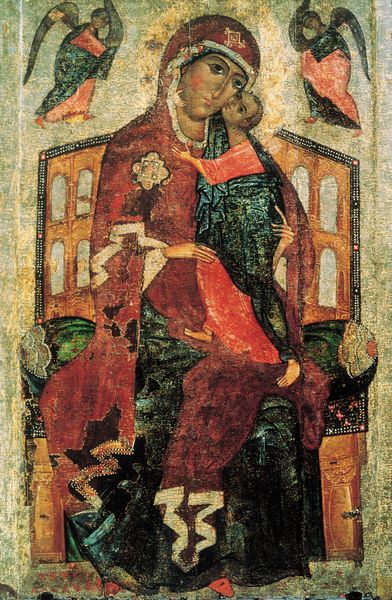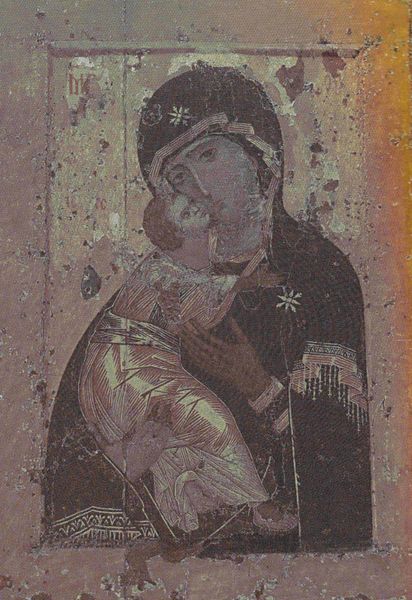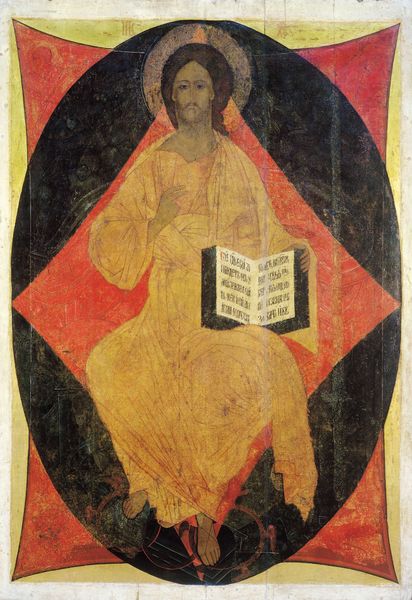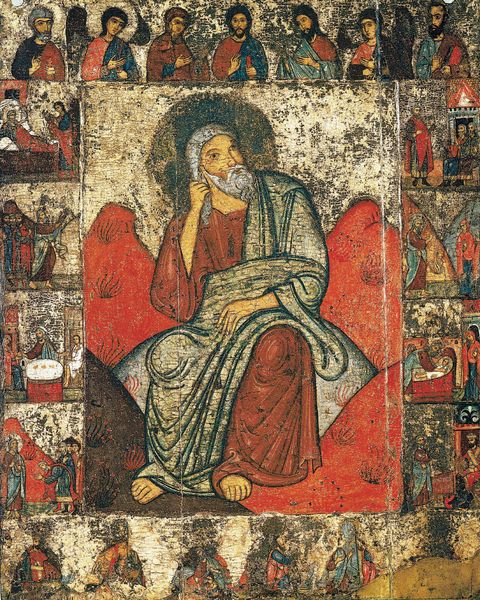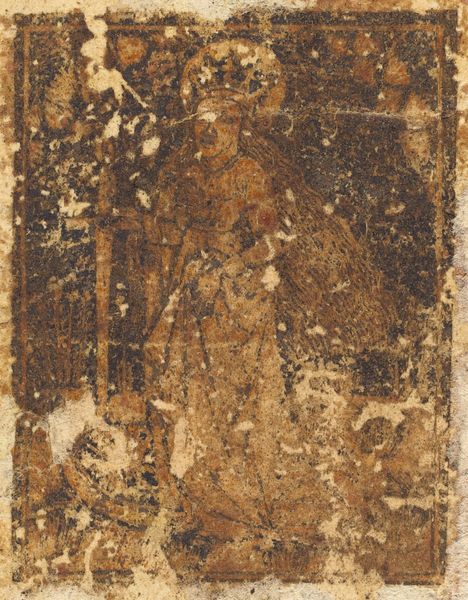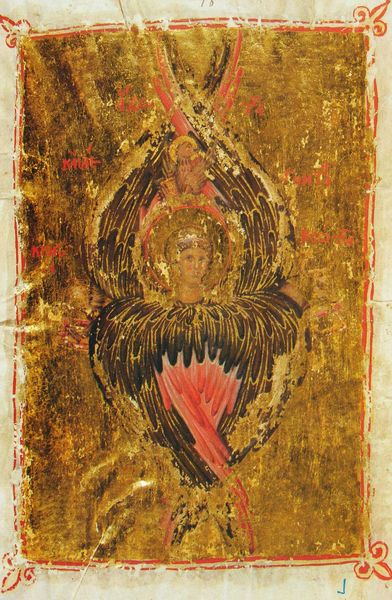
Joshua's Vision of St Michael 1210
0:00
0:00
orthodoxicons
Dormition (Assumption) Cathedral of Moscow Kremlin, Moscow, Russia
#
abstract painting
#
painted
#
possibly oil pastel
#
oil painting
#
acrylic on canvas
#
street graffiti
#
underpainting
#
paint stroke
#
painting painterly
#
watercolor
Dimensions: 50 x 35.8 cm
Copyright: Orthodox Icons,Fair Use
Editor: Here we have "Joshua's Vision of St Michael," an icon from 1210, currently located in the Dormition Cathedral of Moscow Kremlin. The colors are so rich, even after all this time, though it looks quite damaged, too. What strikes you most about it? Curator: Icons like this weren't simply devotional images; they were active participants in the socio-political landscape of their time. How do you see the figure of St. Michael being presented here, and what does that tell us about the anxieties or aspirations of the society that created this work? Consider also that icons during this period in Russia carried significant cultural authority, acting as visual conduits between the divine and earthly realms. Editor: Well, St Michael looks…intimidating, almost warrior-like. So, perhaps a need for protection? Or maybe a way to visually represent power? Curator: Precisely. Now, think about the history of the Dormition Cathedral itself, a site of coronations and important religious ceremonies. This icon would have been a focal point, reinforcing the divine right of rulers and the protective power of the Church. Does that change how you perceive St. Michael's posture and attire? How does it connect to displays of masculine power in icons today? Editor: It definitely gives it more context. Seeing it as part of this power dynamic, not just a religious image, really shifts the way I understand it. Curator: Indeed. And beyond its symbolic role, the very materiality of the icon – the gold leaf, the carefully chosen pigments – speaks to the immense resources and craftsmanship invested in these objects. We must ask: Who had access to these materials and skills, and what does that say about class structures? Considering all of this informs a deeper, more nuanced understanding of this image, no? Editor: Absolutely. I never considered the material having significance beyond just making it beautiful. Thanks for widening my view. Curator: My pleasure. Recognizing art's connection to broader social realities offers an understanding of cultural values in a powerful way.
Comments
No comments
Be the first to comment and join the conversation on the ultimate creative platform.
